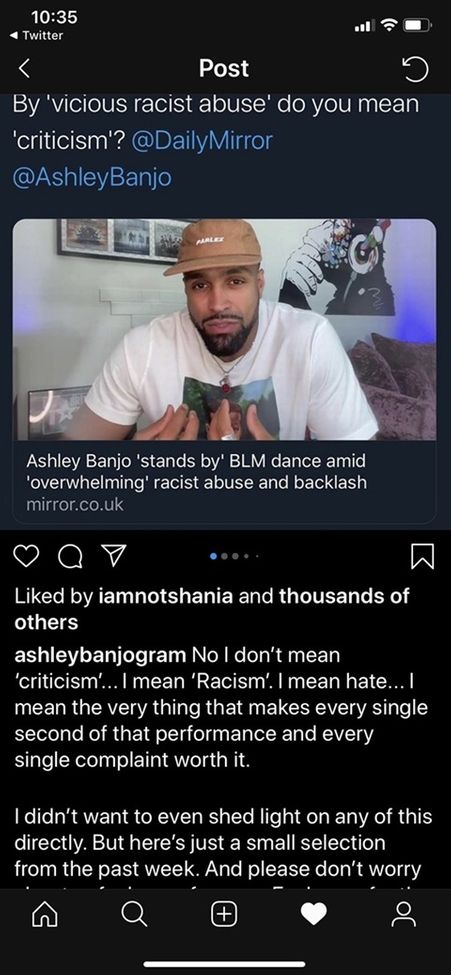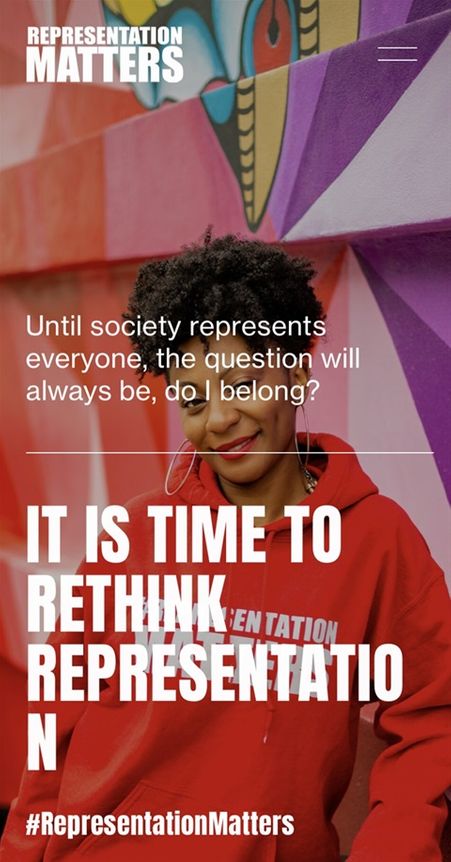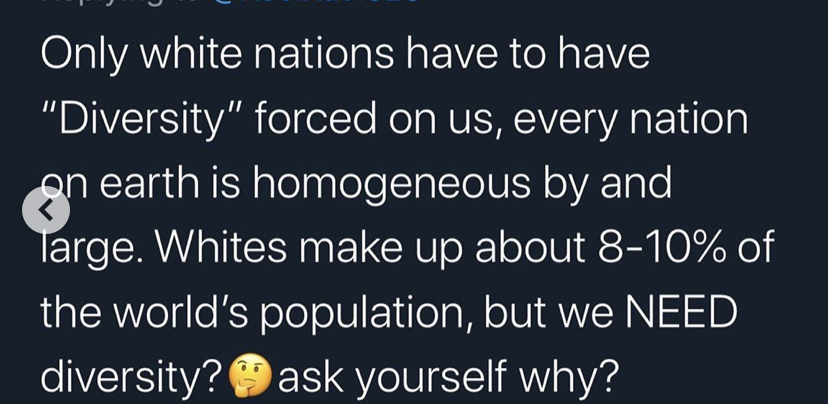Piers is outraged again, but so am I. Diversity sings and will for evermore
Stand up and Be Counted by Terrence Channer
WHY I AM SO HAPPY ABOUT THE COMPLAINTS (QUASI-REFERENDUM) ABOUT DIVERSITY’S PERFORMANCE
Diversity’s performance covered several 2020 issues from Technology, COVID-19 the NHS through to George Floyd, but the public outcry centres solely on the artistic, factual depiction of the killing of this black man.
The BGT audience wanted a Paul Potts Susan Boyle goosebumps moment, but got a knee on the neck instead.
It was a brilliantly captivating, heart-rending performance. Performance art at its finest.
I feel totally vindicated, as do many black people, by the unprecedented number of complaints to Ofcom about art imitating life, in showing the historic death of a black man that sent reverberations around the globe this year.
I see the complaints as a poll. Over 24,000 voted to make clear their resounding objections to Ofcom.
For each vote cast, hundreds more objected without voting.
This tells me all I need to know. Ironically this Ofcom poll has simply confirmed what we’ve been saying all along; that this country still has a long way to go.
Don’t get me wrong, I’m not happy that there are so many racists complaining, I’m just happy that the Ofcom complaints system has acted as a poll, as a barometer, a quasi-referendum, gauging the chronic mood in this country.
Aisha Thomas - Representation Matters
On LinkedIn - Terrence Channer
The fact of the matter is that black lives matter and black issues are striking a raw nerve in a lot of people particularly those who can’t take any more of that “black lives matter bullshit“. “Why do we have to put up with it with Lewis Hamilton banging on about it every time he wins! “
“I just wanna watch the football not this black lives matter shit every time I see these players taking the knee“
In reply
Andrew Parker then we won’t agree will we. I am black you are white you have a white perspective I have a black perspective. My perspective is that I see nothing but inspiration from that performance. You see an uncomfortable divisive performance.
I remember growing up watching uncomfortably Bernard Manning and Jim Davidson - I don’t recall my parents ever ringing up complaining and I doubt very much there were over 23,000 complaints about overtly racist “light entertainment“
The fact is white people define what is acceptable.
Franz Fanon - race and racism are social constructs
Listener to rooster screams has something to say about BLM
Be Pleased you don’t need a movement to protect you from harm
Naomi Osaka on Language
Ashley Banjo - loves living and sharing his vision for a better universe
Strategy to Diversify Boards
From the Black Lives Matter movement (BLM) to the Environment, Society and Governance (ESG) investment initiatives, the resounding cry is for greater diversity and inclusion in the workforce, and a reduction in inequality and in the barriers to opportunity.
Yet the changes that reduce the dominance of, to put it bluntly, old white men, in the world’s boardrooms are still seen to be happening at a glacial pace.
A Catalyst study of US Fortune 500 companies showed that those with a higher representation of women on their boards of directors outperformed their peers by 53% in return on equity and 42% in return on sales.
And it is not just a matter of race or gender. There is an increasing focus on cognitive diversity to avoid “group-think”, for example where board members are predominantly accountants. There is plenty of evidence to suggest that a lack of cognitive diversity in the boardroom has been a contributory factor in the dramatic corporate failures that we have seen, such as Wirecard and Carillion, and indeed the financial crisis of 2007/8.
In Testosterone, Cortisol and Financial Risk-Taking, Joe Herbert of the University of Cambridge’s Department of Clinical Neurosciences examined how hormone levels in men and women impacted their risk-related decisions. His review of several studies showed connections between higher levels of testosterone and mispricing and “over-optimism about future changes in asset values.”
So, how are diversity and inclusion linked with strategic business risk?
Most boards are aware these days that environmental and reputational risks are likely to be as important as traditional financial risks, if not more so. BP’s failure with the Gulf oil-spill was not caused by financial factors. Nor was it the environmental impact that did the most damage to the company. It was the reputational harm caused by the mishandling of the oil-spill that proved to be the biggest problem.
But few boards consider diversity and inclusion to be a strategic business risk. They may well have ethnic and gender diversity targets for their workforce. Perhaps they report on ethnic and gender pay-gaps in their annual reports. But they will probably regard diversity and inclusion as an HR issue, and not something that should appear on the strategic risk register.
That is all about to change. There is an increasing awareness that creating an inclusive workplace for all, regardless of gender, ethnicity, background, sexual orientation and beliefs, is not just a source of competitive advantage. It also plays a powerful role in shaping the views of stakeholders: shareholders, employees, suppliers and, probably most important of all, customers.
There is a growing view that a lack of diversity and inclusion in the workforce is a major strategic business risk. The existence of a mono-cultural, ‘group-thinking’, exclusive board of directors is an indication that the risk is not being taken seriously: in all probability such a board does not have the skills, experience or even the inclination to address the issues.
Since April 2017, gender pay-gap reporting has been mandatory in the UK. Financial services, which is one of the most important sectors for the UK economy, has a gender pay-gap of about 34%. That is double the national average of 17%.
This is a serious reputational risk, which will influence how stakeholders, including prospective and current employees, customers and regulators, view financial services firms. This makes diversity and inclusion a business issue rather than an HR issue – a business risk that demands to be actively measured, monitored and managed.
Given that diversity and inclusion should appear on the board’s strategic risk register, which aspects should be covered?
There are four main areas:
- Strategy The main risks to the development of a successful company strategy, where there is a lack of diversity and inclusion in the board and senior management team, is that poor decisions are likely to be made without a challenge to the status quo. The risk of group-think is that the strategic focus is too narrow, opportunities are missed, and ground is lost against competitors.
- Reputation With the immediacy of social media, particularly with respect to customer experience, reputation risk is increasingly important. A diverse board leading an inclusive workforce is much more likely to be able to respond to the needs of a diverse customer base. Boards with only a token attempt at diversity and inclusion, who practice ‘one and done’, are unlikely to convince stakeholders that they are really making an effort. They may well damage the company’s reputation, especially in the eyes of investors looking for exemplary corporate governance practice.
- Leadership The Board and Senior Management team should set the tone from the top of the organisation. Ensuring diversity and inclusion is not just a tick box exercise about numbers and percentages. It is about openness and transparency, a willingness to embrace new ideas, and new ways of thinking. Exit interviews with employees these days more often than not highlight a lack of clear leadership as one of the main reasons for staff wanting to work elsewhere. Leaders who are seen to embrace diversity and inclusion have been shown to be more effective than those that do not.
- Workforce Businesses which deliberately exclude sections of the community on the grounds of gender, ethnicity or some other characteristic are exposing themselves to prosecution for breaking employment law. More importantly though they are limiting the possibilities for recruiting the right people for the job. This is especially true in the case of sectors where there are skills shortages. The risk to the organisation of not making the talent pool for recruitment as wide as possible is that they will miss out on attracting and retaining the best people and thereby reduce their key source of competitive advantage.
Post COVID-19, businesses are looking at the ‘new normal’ for innovative and improved ways of engaging with their employees, customers, suppliers and investors. Traditional ways of doing business are being questioned as rapid advances in technology enable truly global working. Communities are looking to put an end to discrimination and to create environments with equal opportunities, regardless of gender, race, ethnicity or other characteristics.
Diversity and inclusion are rapidly becoming the ‘new normal’. Directors and their boards need to identify, mitigate and monitor the risks of not acting swiftly enough to ensure that they and their workforces put an end to the mono-cultural, group-think way of operating.
by David Doughty, Chartered Director – Chief Executive, Chair, Non-Executive Director, Entrepreneur and Business Mentor
Published in Business Reporter - Fraud Prevention and Risk Management, September 2020





